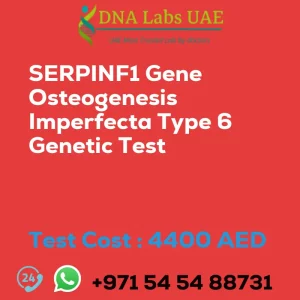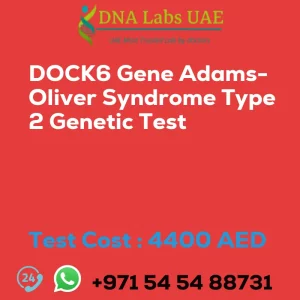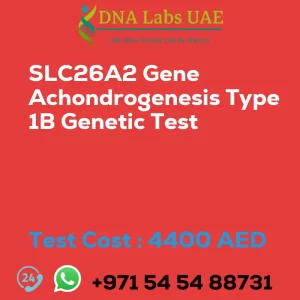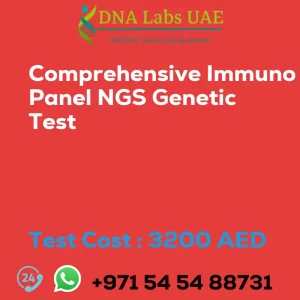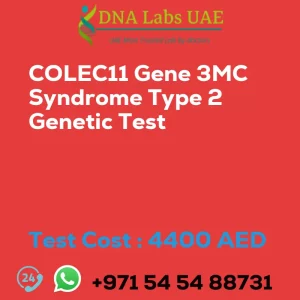TCIRG1 Gene Osteopetrosis Autosomal Recessive Type 1 Genetic Test
Test Name: TCIRG1 Gene Osteopetrosis Autosomal Recessive Type 1 Genetic Test
Components: Blood or Extracted DNA or One drop Blood on FTA Card
Price: 4400.0 AED
Report Delivery: 3 to 4 Weeks
Method: NGS Technology
Test Type: Osteology Dermatology Immunology Disorders
Doctor: Dermatologist
Test Department: Genetics
Pre Test Information: Clinical History of Patient who is going for TCIRG1 Gene Osteopetrosis, autosomal recessive type 1 NGS Genetic DNA Test. A Genetic Counselling session to draw a pedigree chart of family members affected with TCIRG1 Gene Osteopetrosis, autosomal recessive type 1 NGS Genetic DNA Test gene TCIRG1
Test Details
The TCIRG1 gene is associated with a condition called osteopetrosis, autosomal recessive type 1. Osteopetrosis is a rare genetic disorder characterized by abnormally dense bones that are prone to fractures.
NGS (Next Generation Sequencing) genetic testing is a type of genetic testing that analyzes multiple genes simultaneously. It is a highly efficient and cost-effective method for identifying genetic mutations and variants associated with various diseases, including osteopetrosis. In the case of osteopetrosis, autosomal recessive type 1, NGS genetic testing can identify mutations in the TCIRG1 gene that are responsible for the condition. These mutations can disrupt the normal function of the TCIRG1 gene, leading to abnormal bone development and density.
NGS genetic testing for osteopetrosis, autosomal recessive type 1 can help with early diagnosis, genetic counseling, and management of the condition. It can also provide valuable information for family members who may be at risk of inheriting the mutation. It is important to consult with a healthcare professional or genetic counselor to discuss the specific details and implications of the TCIRG1 gene osteopetrosis, autosomal recessive type 1 NGS genetic test. They can provide guidance on the appropriateness and availability of the test, as well as the interpretation of the results.
| Test Name | TCIRG1 Gene Osteopetrosis autosomal recessive type 1 Genetic Test |
|---|---|
| Components | |
| Price | 4400.0 AED |
| Sample Condition | Blood or Extracted DNA or One drop Blood on FTA Card |
| Report Delivery | 3 to 4 Weeks |
| Method | NGS Technology |
| Test type | Osteology Dermatology Immunology Disorders |
| Doctor | Dermatologist |
| Test Department: | Genetics |
| Pre Test Information | Clinical History of Patient who is going for TCIRG1 Gene Osteopetrosis, autosomal recessive type 1 NGS Genetic DNA Test. A Genetic Counselling session to draw a pedigree chart of family members affected with TCIRG1 Gene Osteopetrosis, autosomal recessive type 1 NGS Genetic DNA Test gene TCIRG1 |
| Test Details |
The TCIRG1 gene is associated with a condition called osteopetrosis, autosomal recessive type 1. Osteopetrosis is a rare genetic disorder characterized by abnormally dense bones that are prone to fractures. NGS (Next Generation Sequencing) genetic testing is a type of genetic testing that analyzes multiple genes simultaneously. It is a highly efficient and cost-effective method for identifying genetic mutations and variants associated with various diseases, including osteopetrosis. In the case of osteopetrosis, autosomal recessive type 1, NGS genetic testing can identify mutations in the TCIRG1 gene that are responsible for the condition. These mutations can disrupt the normal function of the TCIRG1 gene, leading to abnormal bone development and density. NGS genetic testing for osteopetrosis, autosomal recessive type 1 can help with early diagnosis, genetic counseling, and management of the condition. It can also provide valuable information for family members who may be at risk of inheriting the mutation. It is important to consult with a healthcare professional or genetic counselor to discuss the specific details and implications of the TCIRG1 gene osteopetrosis, autosomal recessive type 1 NGS genetic test. They can provide guidance on the appropriateness and availability of the test, as well as the interpretation of the results. |


